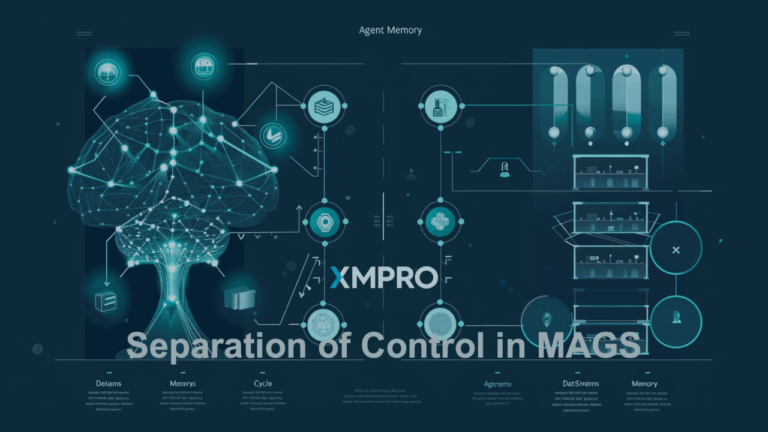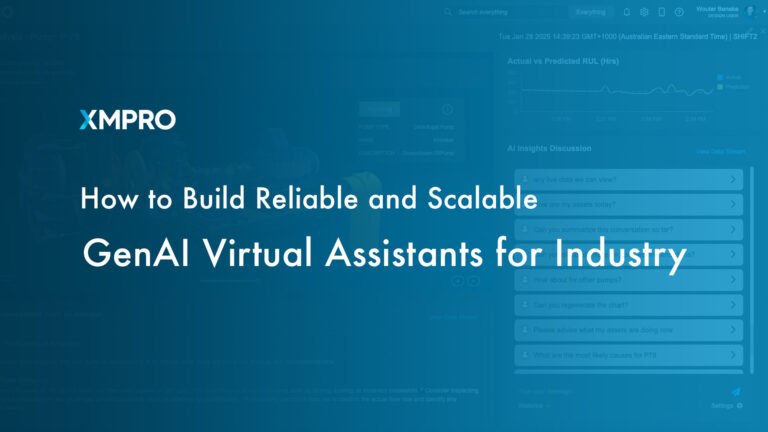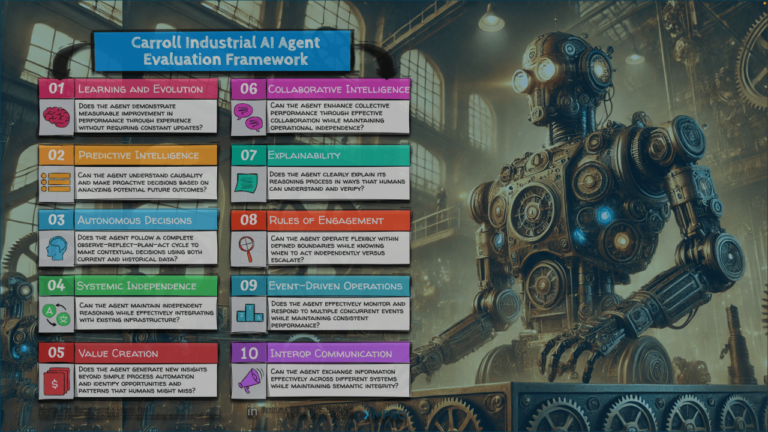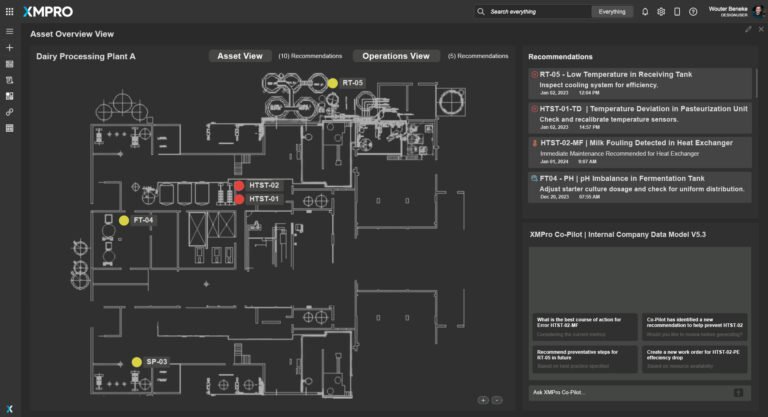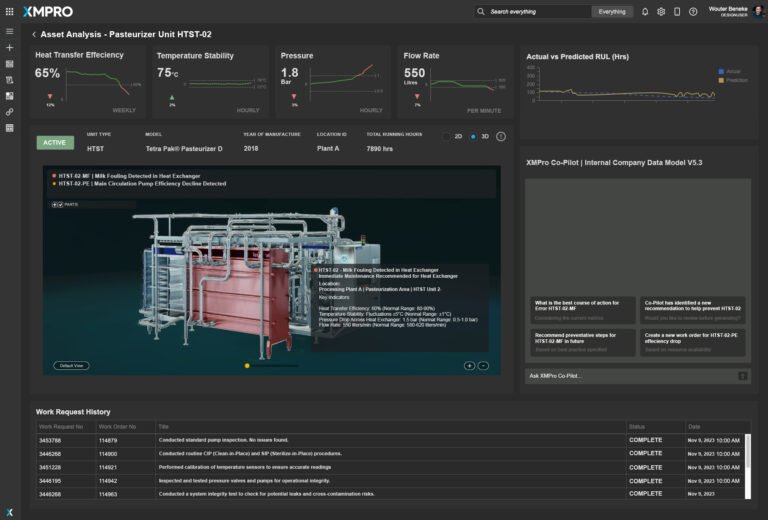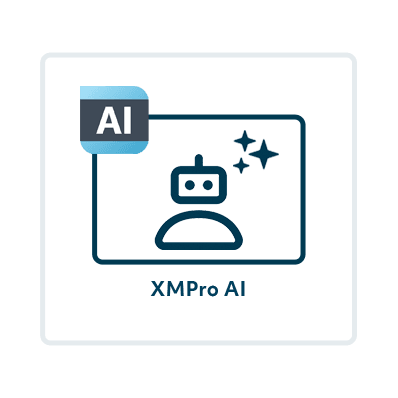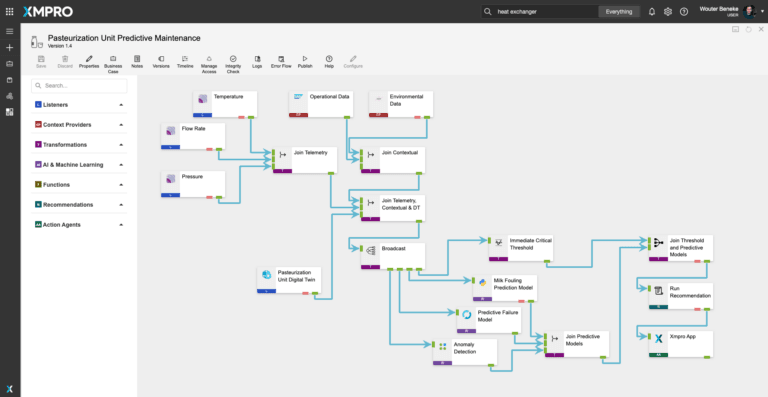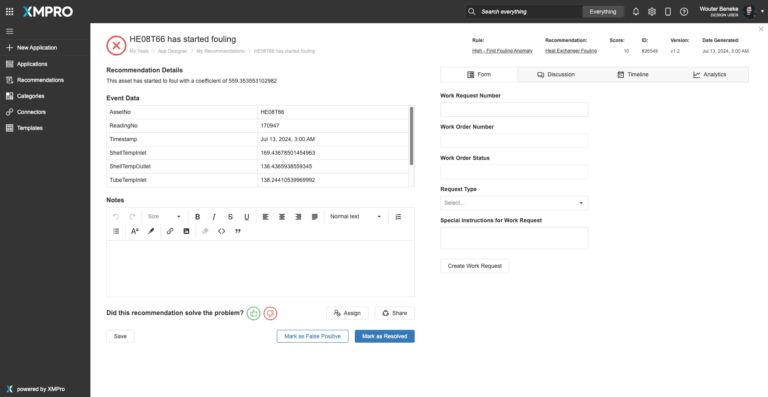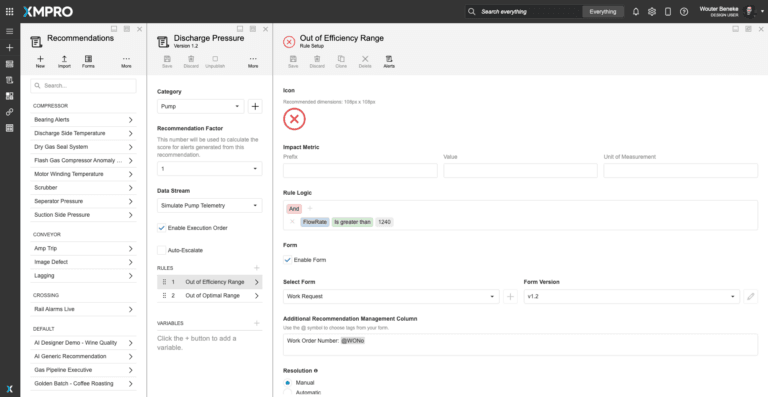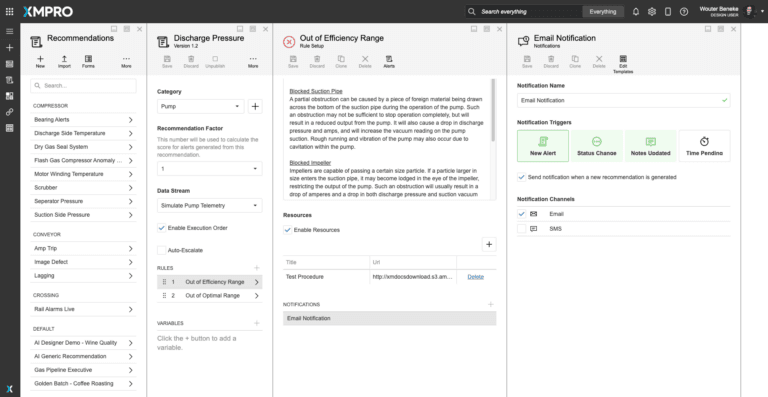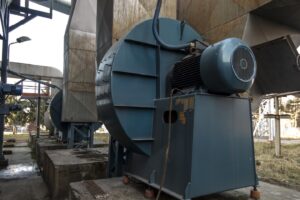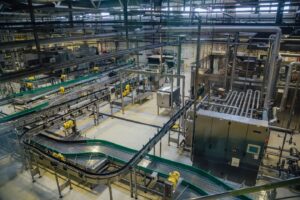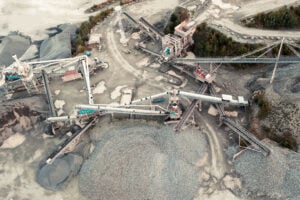Predictive Maintenance for Pasteurization Assets within the Dairy Industry
Introduction
In the dairy industry, pasteurization is a critical process that ensures the safety and quality of dairy products. The reliability and efficiency of pasteurization assets—such as heat exchangers, pumps, and pipes—are vital for continuous production and compliance with health standards. Implementing XMPro’s Intelligent Business Operations Suite (iBOS) for predictive maintenance can significantly enhance the operational reliability of these assets, reduce downtime, and ensure product quality.
The Challenge
The pasteurization process in the dairy industry is critical for ensuring product safety and quality but faces several operational challenges that can affect efficiency, reliability, and compliance:
Equipment Wear and Tear: Continuous operation leads to the gradual wear and tear of pasteurization equipment such as heat exchangers, pumps, and homogenizers.
Scale Buildup in Heat Exchangers:The buildup of scale and fouling in heat exchangers and pipes can reduce heat transfer efficiency and increase energy consumption.
Inconsistent Product Quality: Variations in equipment performance can lead to inconsistencies in the pasteurization process, affecting product quality.
Operational Inefficiencies: Lack of real-time data and predictive insights into equipment performance can lead to reactive maintenance strategies.
Energy Consumption: Pasteurization is an energy-intensive process, with significant costs associated with heating and cooling.
Compliance Risks: Strict regulatory standards govern the pasteurization process, requiring precise control over temperatures and hold times.
Cooling System Failures: Failures in the cooling systems post-pasteurization can lead to inadequate rapid cooling of dairy products.
Addressing these challenges requires a comprehensive approach that not only enhances the reliability and efficiency of pasteurization equipment but also ensures product quality and compliance with safety standards.
The Solution: XMPro’s Intelligent Predictive Maintenance Solution for Pasteurization Assets in the Dairy Industry.
XMPro’s Intelligent Business Operations Suite (iBOS) is precisely engineered to meet the specific challenges of managing pasteurization assets in the dairy industry. Offering a unified and targeted approach, it significantly simplifies maintenance and monitoring tasks, enhancing both the efficiency and quality control of dairy processing. This concise strategy leverages advanced features and functionalities of XMPro iBOS to revolutionize pasteurization asset management, ensuring optimal performance and compliance.
Key Features
Advanced Sensor Data Integration & Transformation:
XMPro iBOS integrates real-time data from sensors monitoring temperature, flow rates, and pressure across pasteurization assets. This data is crucial for detecting early signs of equipment failure or inefficiency. This Enables continuous monitoring of asset health, identifying potential issues before they lead to breakdowns.
Predictive Analytics for Equipment Health:
Utilizing machine learning algorithms, XMPro iBOS analyzes sensor data to predict equipment failures and identify maintenance needs. This approach forecasts issues such as scaling in heat exchangers, wear in pumps, and leaks in pipes. Allowing users to proactively schedule maintenance activities, reducing unplanned downtime and extending equipment lifespan.
Digital Twin Modeling for Pasteurization Process:
Digital twins of the pasteurization process simulate real-world operations, allowing for scenario analysis and optimization. This virtual modeling helps in understanding the impact of various operational changes on product quality and energy consumption.
Automated Maintenance Scheduling:
XMPro iBOS automates the scheduling of maintenance tasks based on predictive analytics, ensuring that maintenance is performed at the optimal time without disrupting production.
Customizable and Interactive Dashboards:
The platform provides customizable dashboards that offer insights into the performance and health of pasteurization assets. Operators can view real-time data, predictive analytics outcomes, and maintenance schedules.
How XMPro iBOS Modules Work Together To Create This Flood Prediction Solution

XMPro Data Stream Designer
XMPRO’s Data Stream Designer lets you visually design the data flow and orchestration for your real-time applications. Our drag & drop connectors make it easy to bring in real-time data from a variety of sources, add contextual data from systems like EAM, apply native and third-party analytics and initiate actions based on events in your data.
Figure 1: Predictive Maintenance Data Stream for Pasteurization Units
This predictive maintenance data stream ingests various data sources to monitor and predict the maintenance needs of pasteurization units. The data is processed through a series of integration and analysis steps, combining telemetry, operational, environmental data, and a digital twin model. The integrated data is broadcasted to multiple predictive models and anomaly detection systems. The predictive models forecast potential issues such as milk fouling and equipment failures, while threshold checks identify immediate critical conditions. The results are combined, and recommendations are generated to provide actionable insights for maintenance and operational adjustments. The final output is delivered through the XMPro App, ensuring proactive maintenance and optimal performance of the pasteurization units.

Recommendation Manager
XMPRO Recommendations are advanced event alerts that combine alerts, actions, and monitoring. You can create recommendations based on business rules and AI logic to recommend the best next actions to take when a certain event happens. You can also monitor the actions against the outcomes they create to continuously improve your decision-making.
Figure 1: Pasteurization Unit Fouling Recommendation
This pasteurization unit fouling recommendation identifies an issue with asset HE08T66, which has started fouling. It provides event data, including asset number, reading number, timestamp, shell temperature inlet, shell temperature outlet, and tube temperature inlet. Users can add notes, mark the recommendation as solved or a false positive, and create a work request with special instructions if necessary.
Figure 2. Configure With Granular Rule Logic
This example discharge pressure recommendation configuration allows users to set up granular rule logic for monitoring pump conditions. The interface enables selecting metrics such as flow rate, discharge pressure, and motor current, and setting specific thresholds to trigger alerts. Users can categorize recommendations, enable execution order, and auto-escalate critical issues.
XMPro App Designer
The XMPro App Designer is a no code event intelligence application development platform. It enables Subject Matter Experts (SMEs) to create and deploy real-time intelligent digital twins without programming. This means that SMEs can build apps in days or weeks without further overloading IT, enabling your organization to accelerate and scale your digital transformation.
Figure 1.Multi-Location Dairy Processing Plant Asset Management Dashboard
This advanced dashboard is designed for dairy industry professionals tasked with overseeing operations across multiple dairy processing plants. It provides a holistic and integrated view of the entire processing chain, from pasteurization to packaging, across various locations. Featuring an interactive layout, the dashboard updates dynamically with the operational status of different plants, offering a clear visual representation of efficiency, health, and compliance with safety standards across the entire operation.
Key Features
Comprehensive Operational Overview:
Displays real-time operational data for all dairy processing activities, including pasteurization, fermentation, cooling, and packaging, across multiple facilities. Each plant is marked with color-coded status icons to indicate operational states and alert priorities.
Performance Optimization Alerts:
Utilizes integrated sensor data and advanced analytics to provide real-time insights into optimization opportunities across all processing stages and facilities. Highlights specific areas requiring adjustments or maintenance to improve efficiency and product quality.
XMPro Co-Pilot Integration:
The dashboard incorporates the XMPro Co-Pilot, trained on internal data, and securely deployed on premise. Allowing for sophisticated intelligence automation.
Drill-Down Capability for Facility-Specific Analysis:
Allows for in-depth analysis of individual plants, including historical performance data, recent maintenance activities, and predictive maintenance recommendations. Supports targeted actions based on each facility’s unique operational demands.
Customizable Alerts and Recommendations:
Features active recommendations generated by intelligent algorithms, providing strategies to enhance performance and address maintenance issues specific to each dairy processing plant.
Overall Plant Status Summary:
A summary section provides an at-a-glance overview of the operational health and efficiency of dairy processing infrastructure across all locations, aiding in strategic decision-making.
Search Functionality and User Interface:
A user-friendly search function and interface facilitate easy navigation and quick access to specific plant data, enhancing the management experience.
Benefits
Adopting a multi-location dairy processing plant view enables a more strategic and efficient approach to managing the complexities of dairy production. By offering a comprehensive snapshot of operations, safety compliance, and performance across all facilities, this dashboard becomes an indispensable tool for ensuring product quality, operational efficiency, and regulatory compliance. It empowers dairy industry professionals to make informed decisions, optimize production processes, and maintain high standards across multiple locations.
Figure2.Real-time Dairy Processing Plant Asset Overview
This Real-time Dairy Processing Plant Asset Overview Dashboard is meticulously designed for dairy plant managers and operators, providing a holistic view of the entire dairy processing operation. It integrates a detailed layout of the plant’s operational zones, dynamically reflecting the status of various critical assets such as pasteurizers, receiving tanks, separators, fermentation tanks, and homogenizers. Each asset, identified by specific labels like HTST-01, RT-05, and FT-04, is visually represented on the dashboard, with color-coded indicators highlighting operational states and alert conditions.
Key Features:
Health and Performance Monitoring of Dairy Processing Assets
The dashboard offers a detailed performance status overview for key dairy processing equipment, identifying potential efficiency improvements or maintenance needs. It flags critical alerts for issues such as deviations in pasteurization temperatures, inconsistencies in milk reception flow rates, and signs of equipment wear or fouling, crucial for maintaining operational efficiency and product integrity.
Real-time Alerts and Performance Optimization Recommendations
Utilizing advanced sensor data and analytics, the dashboard provides immediate insights into optimization opportunities across the dairy processing spectrum. For example, it might suggest recalibration of temperature controls on pasteurization units or cleaning protocols for separators showing signs of fouling, ensuring optimal performance and product quality.
XMPro Co-Pilot Integration:
The dashboard incorporates the XMPro Co-Pilot, trained on internal data, and securely deployed on premise. Allowing for sophisticated intelligence automation.
Detailed Asset Analysis for Informed Decision-making
Operators have the ability to drill down into the specifics of each asset, accessing a wealth of information including historical performance data, recent maintenance activities, and predictive maintenance forecasts. This granular level of detail supports precise, informed decision-making for each piece of equipment.
Actionable Insights and Maintenance Recommendations
The dashboard not only alerts to immediate issues but also offers actionable recommendations for addressing them, such as adjusting the fermentation process parameters in response to pH balance issues or inspecting homogenizers for efficiency losses. These targeted recommendations are designed to preemptively tackle potential problems, maintaining smooth plant operations.
Asset Status Summary for Quick Operational Insight
At the bottom of the dashboard, a concise summary provides an at-a-glance view of the operational status of assets across categories like Pasteurization, Reception, Separation, Fermentation, and Homogenization. This overview helps managers quickly gauge the overall health of the plant’s operations.
Enhanced Navigation and Search Capabilities
With an intuitive search function and easy navigation tools, users can effortlessly access detailed information on specific assets, enhancing the overall management and monitoring experience within the dairy processing environment.
This Real-time Dairy Processing Plant Asset Overview Dashboard is an essential tool for dairy processing facilities, enabling effective monitoring, management, and optimization of the entire operation. By offering real-time data, predictive insights, and actionable recommendations, it significantly enhances operational decision-making, efficiency, and product quality across the dairy processing workflow.
Figure 3. Pasteurization Equipment Asset Class Drilldown
This comprehensive dashboard provides an in-depth overview of various types of pasteurization equipment across multiple dairy processing plants. Currently filtered to display High-Temperature Short Time (HTST) units, the dashboard is capable of showcasing data from other pasteurization systems as well, ensuring a versatile and thorough monitoring approach.
Key Features:
Alerts Overview
The dashboard categorizes open alerts for all pasteurization units by severity (no alerts, medium, high). This feature is crucial for quickly identifying and addressing critical issues across different types of pasteurization systems, including HTST, Batch, and UHT (Ultra-High Temperature) units. The current view shows two high, two medium, and four low severity alerts, signaling immediate maintenance needs to prevent production disruptions.
Work Order Status
A pie chart displays the current status of pasteurization units (available, in planning, or waiting), offering real-time visibility essential for effective coordination and planning. This overview aids in minimizing downtime and maintaining a consistent production flow across various pasteurization technologies and plants.
Performance Metrics (Last 30 Days)
The dashboard provides a detailed summary of performance metrics for all pasteurization units, with the ability to filter by type (e.g., HTST, Batch, UHT). Metrics include new alerts, work requests, open work orders, and alert-to-resolution times, offering insights into the maintenance team’s responsiveness and efficiency.
Asset Filtering and Service Information
Detailed asset filtering shows service dates and schedules for all pasteurization units, regardless of type. This feature supports proactive maintenance planning, helping to anticipate and address potential issues, thereby extending the lifespan of diverse pasteurization equipment and ensuring consistent product quality.
Recent Recommendations
The dashboard lists recent recommendations for specific pasteurization units, complete with detailed views and actionable steps. This section provides maintenance teams with data-driven insights for immediate and future actions, crucial for addressing issues in various pasteurization systems.
Assets Overview
The dashboard displays a list of pasteurization units, each labeled with location, pending recommendations, and service history. This comprehensive view includes all types of pasteurization equipment across different plants, offering a holistic view of the pasteurization process.
XMPro Co-Pilot Integration
Interactive AI-assisted queries, part of the XMPro Co-Pilot integration, offer specific advice on errors, warnings, and issues based on internal data. This feature enhances the decision-making process for maintenance and operational teams across different pasteurization systems.
Navigation and Total Assets
A navigation option at the bottom indicates the presence of additional assets beyond those immediately visible, with the dashboard currently showing a total of 39 assets in the class. This feature highlights the extensive scope of the pasteurization equipment management system.
This Asset Drilldown View is a central hub for monitoring and managing the health and performance of various pasteurization units in dairy processing plants. By providing real-time data, predictive insights, and actionable recommendations, it enhances operational efficiency, reduces downtime, and upholds high-quality production standards across diverse pasteurization technologies.
Figure 4: Asset Analysis View – HTST Pasteurizer System Health
The Asset Analysis View is critical for assessing the operational health of the High-Temperature Short Time (HTST) Pasteurizer Unit HTST-02. Central to dairy processing, the HTST Pasteurizer undergoes stringent monitoring to mitigate failure modes such as heat exchanger fouling, pump wear, and flow rate discrepancies.
KEY FEATURES:
Comprehensive HTST Pasteurizer Health Metrics
The dashboard highlights key health indicators for the HTST Pasteurizer, with a particular emphasis on metrics sensitive to milk fouling—these include heat transfer efficiency, temperature stability, pressure drop across the heat exchanger, and flow rate accuracy. Predictive analytics are employed alongside real-time health data to estimate the remaining useful life (RUL) of the pasteurizer’s components, enabling proactive maintenance planning. The goal is to anticipate and resolve potential issues, thus reducing downtime and ensuring efficient operation that adheres to dairy processing standards.
- Heat Transfer Efficiency: At 65%, efficiency is below the normal range of 80-90%, signaling possible performance degradation due to milk fouling, which obstructs effective heat transfer.
- Temperature Stability: Maintained at 75°C, the temperature is within the optimal pasteurization range of 72-78°C, critical for effective microbial destruction without compromising product quality.
- Flow Rate Accuracy: At 550 liters/min, the flow rate is beneath the optimal range of 580-620 liters/min, indicating possible resistance within the system, potentially from fouling in pipes or filters.
- Pressure Drop Across Heat Exchanger: At 1.8 bar, it exceeds the typical range of 0.5-1.0 bar, often indicative of fouling, as the buildup adds resistance to fluid flow.
Interactive 2D and 3D HTST Pasteurizer Models
The dashboard provides interactive 2D and 3D models of the HTST Pasteurizer, facilitating in-depth component inspection, particularly for parts vulnerable to wear or failure. It highlights critical areas like heat exchanger plates and pump seals, directing maintenance efforts to preempt scaling and mechanical wear.
Error Identification and Proactive Recommendations
The system not only identifies errors such as “Milk Fouling Detected in Heat Exchanger” and “Main Circulation Pump Efficiency Decline Detected” but also suggests proactive measures for maintenance to prevent operational halts.
Detailed HTST Pasteurizer Information
A detailed profile of the HTST Pasteurizer is available on the dashboard, providing essential data for maintenance and operational decision-making:
- Equipment Type: HTST Pasteurizer
- Model: Pasteurizer D
- Year of Manufacture: 2018
- Total Running Hours: 7890 hours, a figure that suggests approaching maintenance milestones.
- Location ID: Plant A, pinpointing the asset’s precise location for easy reference.
XMPro Co-Pilot Integration
With the integration of XMPro Co-Pilot, the system leverages AI to sift through maintenance records and operational data, offering targeted maintenance suggestions. This AI-driven support streamlines decision-making and emphasizes a predictive maintenance approach to address common failures.
Work Request History
Maintenance activities for the HTST Pasteurizer are meticulously logged, documenting service dates, actions performed, and the outcomes, ensuring transparency in the asset’s maintenance and efficiency optimization.
Overall, the Asset Analysis View for the HTST Pasteurizer combines advanced visualizations with data-driven insights and AI-enhanced prognostics to maintain optimal operational efficiency, safety, and regulatory compliance. This tool is indispensable for dairy processors, enabling them to uphold high-quality standards through proactive maintenance and effective pasteurization process management.

XMPro AI
Experience the transformative power of XMPro’s Intelligent Business Operations Suite (iBOS) – Featuring comprehensive AI capabilities, XMPro iBOS helps to significantly increase product yield, drastically reduce downtime, and ultimately eliminate unexpected business events.
Figure 1: Embedded AI Example – Pasteurization Unit Predictive Maintenance
Embedding XMPro AI Agents in XMPro Data Streams enables executable AI and machine learning for algorithmic business processes, significantly enhancing the capabilities of operational digital twins. This integration allows for advanced features such as real-time analytics, MLOps, and the seamless embedding of AI into core business processes. In the example of pasteurization unit predictive maintenance, XMPro’s AI Agents empower the data stream to accurately forecast potential failures and maintenance needs of pasteurization units.
The process begins with the ingestion of real-time sensor data, including temperature, flow rate, and pressure, combined with operational data from systems like SAP and environmental data. This data is further enhanced with contextual information and the digital twin model of the pasteurization unit. The data is normalized and contextualized to provide a comprehensive view of the unit’s operating conditions.
Machine learning models are then applied to predict various potential issues:
- The Milk Fouling Prediction Model forecasts the likelihood of milk fouling, which can impact efficiency and product quality.
- The Predictive Failure Model predicts potential failures based on historical data and current conditions.
- Anomaly Detection identifies unusual patterns or deviations that could indicate potential problems.
The integrated data and predictive model results are then filtered, merged, and broadcasted for further analysis. The data stream generates actionable recommendations, such as maintenance tasks or operational adjustments, which are then sent to the XMPro App for execution. This process ensures optimal performance of the pasteurization unit, minimizes downtime, and enhances overall operational efficiency.
Embedded AI Agents
XMPro offers a variety of AI agents to support diverse operational needs, including:
- Azure OpenAI: Enhances natural language processing capabilities.
- OpenAI Assistant: Facilitates conversational AI integrations.
- Anomaly Detection: Identifies unusual patterns in data to prevent operational failures.
- Forecasting: Predicts future trends based on historical data.
- Kmeans Clustering: Groups similar data points for more effective analysis.
- MLflow: Manages the machine learning lifecycle, including experimentation, reproducibility, and deployment.
- Regression: Provides predictive analytics to understand relationships between variables.
By embedding these powerful AI agents, XMPro transforms AI models into valuable assets that drive business growth and efficiency, bridging the gap between data flow and operational AI.
Why XMPro iBOS for Dairy Processing Plant Operations?
XMPro’s Intelligent Business Operations Suite (iBOS) delivers a suite of solutions specifically designed for the complex needs of managing dairy processing operations across multiple facilities. Here’s how XMPro iBOS revolutionizes dairy processing plant management:

Advanced Intelligent Digital Twin Modeling:
XMPro iBOS constructs detailed digital twins of dairy processing plants, offering a virtual model that reflects the intricate operations of facilities spread across different regions. This capability facilitates in-depth analysis and simulation of processing equipment performance, including pasteurizers, separators, and fermentation tanks, under various operational conditions. It’s instrumental for optimizing processes in plants with diverse environmental and production demands.

Advanced Sensor Data Integration & Transformation:
Integrating real-time data from sensors across all dairy processing equipment, XMPro iBOS captures critical metrics such as temperature, flow rates, and pressure levels. This extensive monitoring enables the identification and analysis of performance optimization opportunities throughout the dairy processing chain, ensuring uniform quality and efficiency.

Predictive Analytics for Performance Enhancement:
Leveraging cutting-edge predictive analytics, XMPro iBOS anticipates potential issues and optimizes operational settings for each piece of equipment. This foresight allows for proactive adjustments in processes like pasteurization and fermentation, maximizing product quality and throughput while minimizing waste and downtime.

Maintenance Scheduling Optimization:
By analyzing equipment performance data, XMPro iBOS streamlines maintenance schedules, adopting a predictive maintenance model over a reactive one. This approach is crucial for coordinating maintenance activities across multiple facilities, enhancing equipment longevity and reducing operational interruptions.

Real-Time Monitoring and Predictive Alerting:
Automated recommendations and alerts for equipment adjustments are generated based on real-time and predictive data analyses. This ensures that each piece of equipment, from homogenizers to cooling tanks, operates at optimal efficiency, significantly reducing the need for manual oversight.

Customizable and Interactive Dashboards:
XMPro iBOS provides customizable dashboards that offer real-time insights into the health and performance of equipment across all dairy processing plants. These dashboards are designed to be interactive, enabling detailed scrutiny of specific operational aspects and supporting centralized management decisions.

Scalability and Flexibility – Start Small, Scale Fast:
Designed to accommodate dairy operations of any scale, XMPro iBOS’s modular architecture allows for seamless integration and adaptability. This scalability ensures that dairy processing plants can efficiently manage operations as they expand or adapt to changing market demands.

Enhanced Safety & Operational Efficiency:
XMPro iBOS boosts operational safety by identifying potential hazards and inefficiencies in the processing line, ensuring that all equipment operates within safe and optimal parameters. This contributes to a safer working environment and more efficient production processes.

XMPro Blueprints – Quick Time to Value:
Offering quick time-to-value, XMPro Blueprints facilitate rapid deployment of digital twin solutions across dairy processing operations. These templates are built on industry best practices, ensuring that plants can quickly realize the benefits of digital transformation.
XMPro iBOS uniquely addresses the challenges of dairy processing plant operations by offering a holistic, predictive, and integrated management solution. Its advanced digital twin technology, combined with comprehensive data analytics and customizable dashboards, empowers dairy processors to achieve unparalleled operational efficiency, product quality, and safety across multiple facilities.

Not Sure How To Get Started?
No matter where you are on your digital transformation journey, the expert team at XMPro can help guide you every step of the way - We have helped clients successfully implement and deploy projects with Over 10x ROI in only a matter of weeks!
Request a free online consultation for your business problem.
"*" indicates required fields











